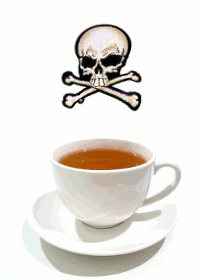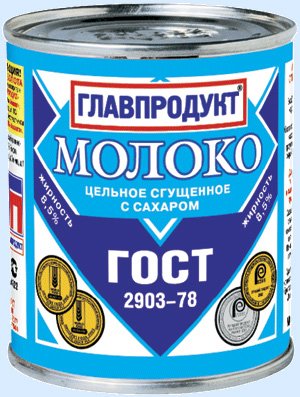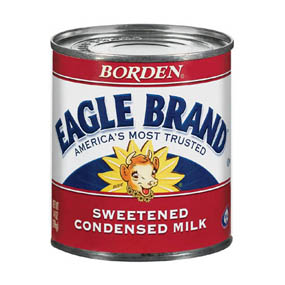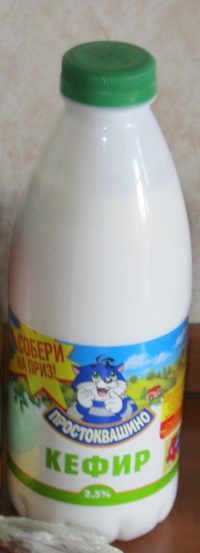Categories: "Food"
Чай (часть третья)
The Russian word for tea is чай. It declines like this:
| Sg | Pl | |
| Nom | чай | чаи |
| Acc | ||
| Gen | чая | чаёв |
| Pre | чае | чаях |
| Dat | чаю | чаям |
| Ins | чаем | чаями |
You don't usually find the plural forms, but occasionally they are used to mean ‘types of tea.’ Mostly you just use the singular.
| Фу, чай уже остыл. | Yuck, the tea has already grown cold. |
| — С чем ты любишь чай? — Я люблю чай с лимоном. |
“What do you like with your tea?” “I like tea with lemon.” |
| — Ты любишь зелёный чай? — Мне всё равно, но мне больше нравится чёрный чай. |
“Do you like green tea?” “I have nothing against it, but I like black tea better.” |
| — Я очень интересуюсь чаем. — В смысле, ты любишь чай пить? — Да нет, у меня аллергия на чай. Я интересуюсь историей чая и тем, как чай стал таким популярным в России и Средней Азии. |
“I'm really interested in tea.” “You mean you like to drink tea?” “Oh, no, I’m allergic to tea. I'm interested in the history of tea and how it became so popular in Russia and Central Asia.” |
Tea always reminds me of a classic English joke. Supposedly between Lady Astor and Winston Churchill there was constant verbal sparring:
| ЛА: Винстон, если бы я была вашей женой, я бы подсыпала яд в ваш чай. ВЧ: Мадам, если бы Вы были моей женой, я бы сразу же его выпил. |
LA: Winston, if I were your wife, I would poison your tea. WC: Madam, if you were my wife, I would promptly drink it. |

Щи
If you were to make a list of the most classically Russian dishes, щи would be at the top. Щи is a cabbage soup. It usually includes some beef, and the meat and cabbage are cooked separately. The word only occurs in the plural, which results in this curious declension pattern:
| Pl | |
| Nom | щи |
| Acc | |
| Gen | щей |
| Pre | щах |
| Dat | щам |
| Ins | щами |
You can't mention щи without mentioning the saying «Щи да каша — пища наша» “Cabbage soup and boiled grain is our kind of food.” People say this when they are putting ordinary food on the table to indicate that they aren't fancy-shmancy gourmands with expensive tastes. They are just good ol’ down home folks with simple desires. The American equivalent would be something like “We’re meat and potatoes folks.” Here are some sample sentences.
| — Из чего делают щи? — Надо ли спрашивать? Из капусты, говядины, лука и картошки. |
“What do they make cabbage soup from?” “Do you really have to ask? Cabbage, beef, onion and potatoes.” |
| Фу, в моих щах плавает муха! | Yuck, there is a fly floating in my cabbage soup! |
| — Я люблю щи заправлять майонезом. — Правда? Лучше сметаной. |
“I like to top my cabbage soup with mayonaisse.” “Really? Sour cream is better.” |
| К щам лучше подавать чёрный хлеб, а не белый. | It's better to serve black bread with cabbage soup, not white [bread]. |
Капуста
The Russian word for cabbage is капуста. It is a perfectly regular feminine noun that declines like this:
| Sg | Pl | |
| Nom | капуста | капусты |
| Acc | капусту | |
| Gen | капусты | капуст |
| Pre | капусте | капустах |
| Dat | капустам | |
| Ins | капустой | капустами |
Russian families eat cabbage all the time, so you can often come across phrases like this:
| — Ты любишь капусту? — Да, очень. |
“Do you like cabbage?” “Yes, I like it a lot.” |
| — Хочешь ещё капусты? — Да, пожалуйста. |
“Do you want some more cabbage?” “Yes, please.” |
| — С чем пирожки? — С капустой. |
“What kind of pirozhki are these?” “Cabbage.” |
| Древние римляне очень бережно относились к капусте. (source) | The ancient Romans had great respect for cabbage. |
| Купи два кочана капусты. | Buy two heads of cabbage. |
The Russians eat cabbage ten thousand ways. The Russian version of sauerkraut is called квашеная капуста, literally “fermented cabbage.” If you wrap the leaves around meat and rice and then steam them, then they are called голубцы. If you turn it into soup, it is called щи. If you add beets to the soup, you end up with борщ. If you put it on your head with mayonaisse, it is an aid to logical thinking.
Okay, I made that last bit up, but I really do love cabbage nowadays. If you have never developed the habit of eating it, take a quick trip to Russia where they know how to cook it right.
Сгущёнка
My former student Ryan is living in Kazan and studying. Despite his studying, he manages to spend some time with his girlfriend, Lila. Now Ryan is an excellent guy. He is one of those men who cooks and cleans and is communicative. Lila considers herself lucky. (Frankly, Lila is worth it. If I were thirty years younger and smarter than I myself had been at that age... well, nevermind.) Anyhoo, Lila asked Ryan to go to the store to get some sweetened, condensed milk. He went. And he said to the store attendant, «Я хочу мошонку» “I want scrotum.” I leave it to you to imagine the attendant's reaction.
The word Ryan was looking for was сгущёнка, not мошонка. The word comes from the root густ-, which means ‘thick’, from which we derive the verb сгущать/сгустить ‘to make thick’, hence сгущёнка means ‘stuff which has been thickened’, in this case specifically milk with sugar added. Here's a picture:

It declines like this:
| Sg | |
| Nom | сгущёнка |
| Acc | сгущёнку |
| Gen | сгущёнки |
| Pre | сгущёнке |
| Dat | |
| Ins | сгущёнкой |
The Russians love сгущёнка. Not only can you make various desserts with it, often Russians like to drink tea and then simply stick a spoon in the сгущёнка and have a mouthful. It is so good. Here are a few sentences.
| — Я люблю чай со сгущёнкой. Ты сгущёнку любишь? — Нет, я не большой любитель сладкого. |
“I love tea and sweetened, condensed milk. Do you like sweetened, condensed milk?” “No, I'm not a big fan of sweets.” |
| Хотя этот торт очень вкусный, он приготовлен без сгущёнки. | Although this cake is very tasty, it was made without sweetened, condensed milk. |
| Фу! В сгущёнке плавает муха! | Yuck! There's a fly floating in the sweetened, condensed milk! |
| А задумывались ли вы, что на самом деле, сгущёнка еще и гораздо полезней многих других сладостей – она содержит кальций и молочный белок, в ней нет красителей, дрожжей или усилителей вкуса. (source) | But have you ever thought that, really, sweetened, condensed milk is still much healthier than many sweets? It contains calcium and milk protein. It has no coloring agents, yeast or flavor additives. |
Now a comment on the power of branding. As I was growing up, the most popular brand of sweetened, condensed milk was Eagle Brand. It was so popular that no one ever said ‘sweetened, condensed milk.’ We just said ‘Eagle Brand.’ For instance, we could have a conversation like:
“Will do.”

Nowadays there are generic versions of sweetened, condensed milk as well, but if I ever have a conversation with my mother, I'm sure we will not say ‘sweetened, condensed milk.’ We will say ‘Eagle Brand’ and know exactly what the other means.
Кефир
 Another of the Russians' favorite fermented milk products is кефир kefir. You take milk, mix it with bacterial and yeast cultures, let it ferment for one or two or three days, and then bottle it. Usually it is made from cow's milk, but it's possible to use sheep or goat's milk as well. Compared to ряженка it is rather more acidic and slightly carbonated. The alcohol content in commercial kefir in Russia is usually less than 1%. It actually has live cultures in it, so it colonizes your gut with friendly flora that may have beneficial effects in human beings.
Another of the Russians' favorite fermented milk products is кефир kefir. You take milk, mix it with bacterial and yeast cultures, let it ferment for one or two or three days, and then bottle it. Usually it is made from cow's milk, but it's possible to use sheep or goat's milk as well. Compared to ряженка it is rather more acidic and slightly carbonated. The alcohol content in commercial kefir in Russia is usually less than 1%. It actually has live cultures in it, so it colonizes your gut with friendly flora that may have beneficial effects in human beings.
| Sg | |
| Nom | кефир |
| Acc | |
| Gen | кефира |
| Pre | кефире |
| Dat | кефиру |
| Ins | кефиром |
Most Americans' only exposure to cultured dairy products is to yogurt, usually flavored with sugar or fruit in the US, or sour cream as part of dips or dressings. So when Americans are first are exposed to kefir, they usually have a negative reaction. I didn't care for it at first, but now I really like it; and the American version that they sell in places like Whole Foods that is flavored with sugar and fruit... well, it's edible in a long-term toxic sort of way, but it's nothing like Russian kefir. Let's see some sample sentences:
| — Ты любишь кефир? — Очень. |
“Do you like kefir?” “Very much.” |
| —Ты хочешь кефира? — Хочу. |
“Do you want some kefir.” “I do.” |
| Ни в одном из магазинов белорусской столицы кефира в продаже нет. | Not a single store in the Belarusian capital has kefir for sale. |
| Скажи кефиру «Нет»! (source) | Just say ‘no’ to kefir! |
| Похудеть на кефире: всю неделю нужно пить пол-литра кефира до четырёх часов дня. (adapted from this source) | Lose weight on a kefir: all week long you need to drink half a liter of kefir by four o'clock in the afternoon. |
| Я обожаю острую пищу с кефиром — варишь макароны, на сковородке жаришь лук и красный перец, потом добавляешь черный перец, в блюдо наливаешь кефир и макароны, и со сковородки всё выкладываешь и сверху трёшь чеснок! Так остренько и вкусненько получается! (adapted from this source) | I love to make spicy dishes garnished with kefir. You boil some pasta. In a frying pan saute onions plus red pepper, then add black pepper. Into a dish you pour the kefir and the pasta, and you pour out everything from the frying pan and mince some garlic. It turns out nicely spicy and yummy! |
Now what about the nutritional value of kefir? Here's the label.

Fat — 2.5 g; protein — 2.8 g; carbohydrate — 4.0 g.
Energy value (caloric value)
per 100 g of product — 50 calories
Now that's interesting. In terms of its fat content it's about the same as ряженка.